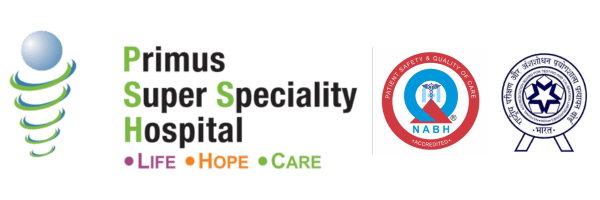Chest physiotherapy provides essential care to respiratory patients in Delhi because this polluted city makes their lung conditions worse. Through chest physiotherapy sessions patients enable air to flow more easily and protect themselves from lung infections. You can use physical exercises to help lung secretions exit the body through chest physiotherapy. The technique helps lungs work better and doctors apply it when someone has chronic bronchitis, cystic fibrosis or pneumonia
Purpose of Chest Physiotherapy
The primary goals of chest physiotherapy are:
- Mucus Clearance: A lung infection can develop when mucus is eliminated from the body.
- Improved Breathing: It enhance airflow and oxygenation.
- Prevention of Lung Complications: This process decreases the chance of lung tissue collapse and related problems.
By facilitating the removal of secretions, chest physiotherapy helps maintain clear airways, which is essential for efficient gas exchange and overall respiratory health.
Indications for Chest Physiotherapy
Chest physiotherapy is indicated for patients with:
- Chronic obstructive pulmonary disease (COPD)
- Cystic fibrosis
- Bronchiectasis
- Neuromuscular disorders affecting respiration
- Postoperative pulmonary complications
Techniques in Chest Physiotherapy
Several techniques are employed in chest physiotherapy:
Postural Drainage
The pulmonologist positions the patient to let mucus move out of specific lung parts because of gravity. Each position is designed to access particular lung sections in postural drainage. Placing a patient on their side brings mucus from one lung toward the opposite side whereas lying down facedown helps drain the back part of the lungs.
Percussion
We call this technique clapping because it involves gentle hand taps on the chest wall to loosen mucus. This technique lets the mucus move more smoothly. The therapist taps the lung areas with cupped hands to deliver a hollow-sounding sound.
Vibration
Gentle chest shaking while exhaling helps push mucus towards the wider airways. Therapists use either their hands or motors to shake the chest wall which they often combine with vibration techniques
Deep Breathing Exercises
Deep breathing and strong exhale movements expand your lungs and push secretions towards exit. People use diaphragmatic breathing and incentive spirometry techniques to help their breathing.
Huff Coughing
For mucus clearing purposes a person breathes deeply before forcefully expelling air through their open mouth. The technique enables people to save energy while effectively removing secretions without experiencing the same extent of fatigue associated with standard coughing methods
Steps in Chest Physiotherapy
The chest physiotherapy procedure typically follows these steps:
- Assessment: Evaluating the patient’s condition and determining the appropriate techniques.
- Positioning: Placing the patient in the correct posture for effective drainage.
- Application of Techniques: Performing percussion, vibration, and breathing exercises as needed.
- Monitoring: Observing the patient’s response and adjusting the treatment accordingly.
- Post-Treatment Care: Ensuring the patient is comfortable and monitoring for any adverse effects.
Each session is tailored to the individual’s needs, taking into account their specific respiratory condition and overall health status.
Types of Chest Physiotherapy
Chest physiotherapy encompasses various methods tailored to individual needs:
- Manual Techniques: Involving hands-on methods like percussion and vibration.
- Mechanical Devices: Utilizing equipment such as high-frequency chest wall oscillation vests.
- Breathing Exercises: Including techniques like incentive spirometry to encourage deep breathing.
The choice of technique depends on factors such as the patient’s age, the severity of their condition, and their ability to participate in the therapy.
Chest Physiotherapy Positions
Effective chest physiotherapy relies on proper positioning:
- Supine Position: Lying flat on the back, used for anterior lung segments.
- Prone Position: Lying on the stomach, targeting posterior lung segments.
- Side-Lying Position: Lying on one side to drain the opposite lung.
- Trendelenburg Position: Lying with the head lower than the feet to assist in draining lower lung segments.
These positions are strategically used to leverage gravity in facilitating mucus drainage from different parts of the lungs.
Importance of Accessing a Specialized Physiotherapy Hospital in Delhi
Finding a well-equipped physiotherapy hospital in Delhi is essential for effective treatment. A good hospital will have trained physiotherapists, specialized tools, and clean, safe environments for therapy. This matters even more for chest physiotherapy, which involves close patient monitoring and careful handling. Not every clinic is fit for this level of care.
Delhi, with its pollution levels and dense population, sees many cases of respiratory problems. Conditions like bronchitis, COPD, and post-COVID complications are common. A specialized physiotherapy hospital in Delhi can diagnose, monitor, and manage these with precision.
Patients searching for a “physiotherapy hospital near me” should look for institutions that provide:
- Respiratory-focused therapy units
- Certified and experienced staff
- Customized care plans
- Availability of emergency support
A specialized approach ensures safer outcomes and long-term lung health.
Step-by-Step Overview of a Chest Physiotherapy Session in Delhi
Each chest physiotherapy session follows a structured protocol. Here’s what a typical session in a physiotherapy hospital in Delhi looks like:
- Assessment: The therapist evaluates the patient’s condition — breathing rate, oxygen levels, and cough strength.
- Positioning: The patient is placed in drainage positions specific to the lung segment being targeted.
- Application of Techniques:
- Percussion with cupped hands or mechanical devices
- Vibration during exhalation
- Breathing exercises to assist in mobilizing mucus
- Coughing or Suctioning: After therapy, patients are encouraged to cough up mucus. In cases where this isn’t possible, suctioning may be used.
- Post-Treatment Monitoring: The patient’s breathing and heart rate are monitored to ensure safety and effectiveness.
This methodical approach improves outcomes, especially when carried out in a dedicated physiotherapy hospital in Delhi.
Long-Term Benefits of Regular Chest Physiotherapy
Regular chest physiotherapy can help manage chronic lung conditions and prevent flare-ups. Patients who receive routine care often report fewer hospital visits and improved quality of life.
Benefits include:
- Improved airflow and oxygen exchange
- Reduced frequency of infections
- Enhanced physical activity tolerance
- Decreased need for antibiotics or hospitalization
In Delhi’s high-pollution environment, chest physiotherapy also serves a preventive role. For at-risk populations — the elderly, smokers, or people with asthma — regular therapy helps maintain lung hygiene.
Physiotherapists often combine education, breathing techniques, and posture correction with therapy to support long-term wellness.
Why Best Physiotherapy Hospital in Delhi for Chest Physiotherapy
Patients should be careful while selecting a facility for chest physiotherapy. Here’s what to look for:
- Expertise: Choose a pulmonology hospital in Delhi with physiotherapy specialists.
- Technology: Look for facilities using modern devices for vibration and drainage.
- Personalization: Good hospitals tailor therapy to each patient’s condition.
- Clean Environment: Cleanliness is essential to avoid infections during therapy.
- Accessibility: A hospital that is easy to reach matters for regular sessions.
Typing “physiotherapy hospital near me” into a search engine might help, but not all hospitals provide chest physiotherapy. It’s better to search specifically for “physiotherapy hospital in Delhi” with experience in respiratory conditions.
When looking for top-quality chest physiotherapy in Delhi patients choose Primus Hospital. The hospital offers state-of-the-art respiratory treatment along with a group of qualified physiotherapists. The team designs specific treatments that blend postural drainage, vibration therapy and regular respiratory rehab in a safe clinical setting.
Primus super specialty hospital in Delhi uses global standard practices and medical gear to provide patients their top choice in local physiotherapy care. Our dedication to quality healthcare protects patient safety and ensure effective therapy outcomes in every session.
FAQs
In such cases, physiotherapists may use incentive spirometers or passive breathing techniques. Therapy is adjusted to suit the patient’s strength and condition.
Some patients with stable conditions can do modified versions at home. However, hospital supervision is best for safety, especially for severe cases
When done correctly by a expert physiotherapist in Delhi, it’s safe and not painful. Patients with contraindications need a detailed review before therapy starts.













